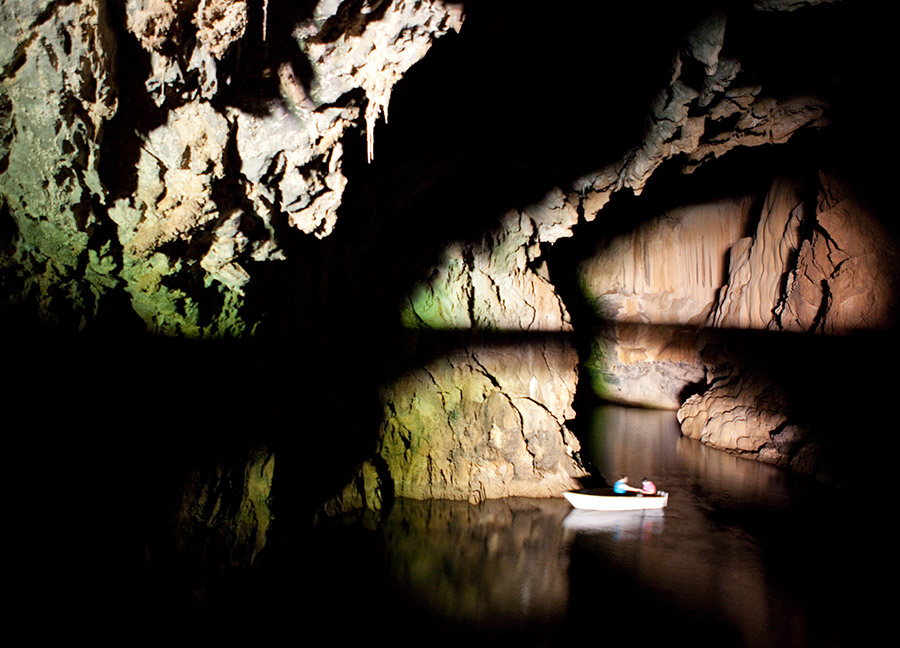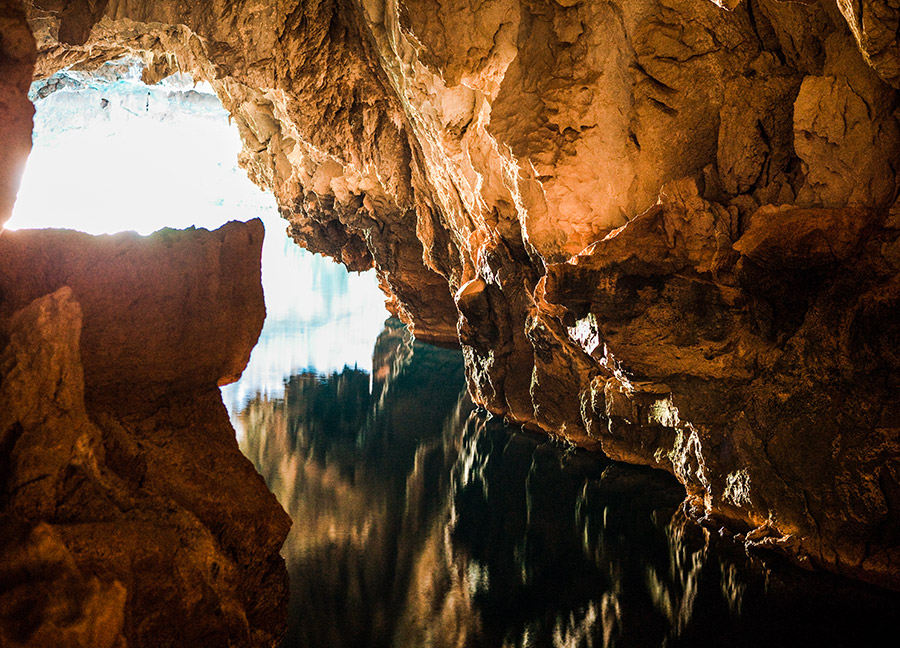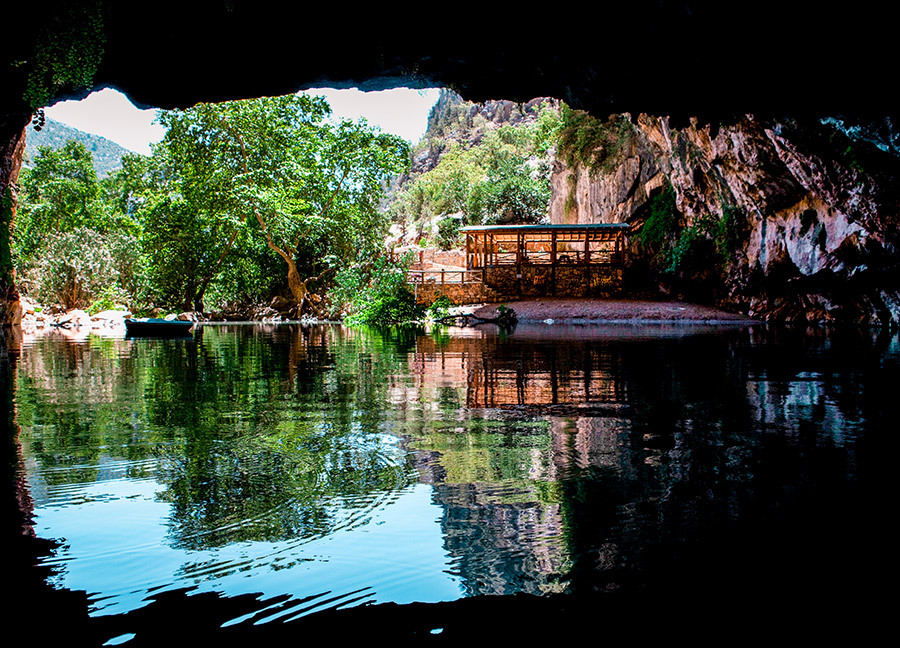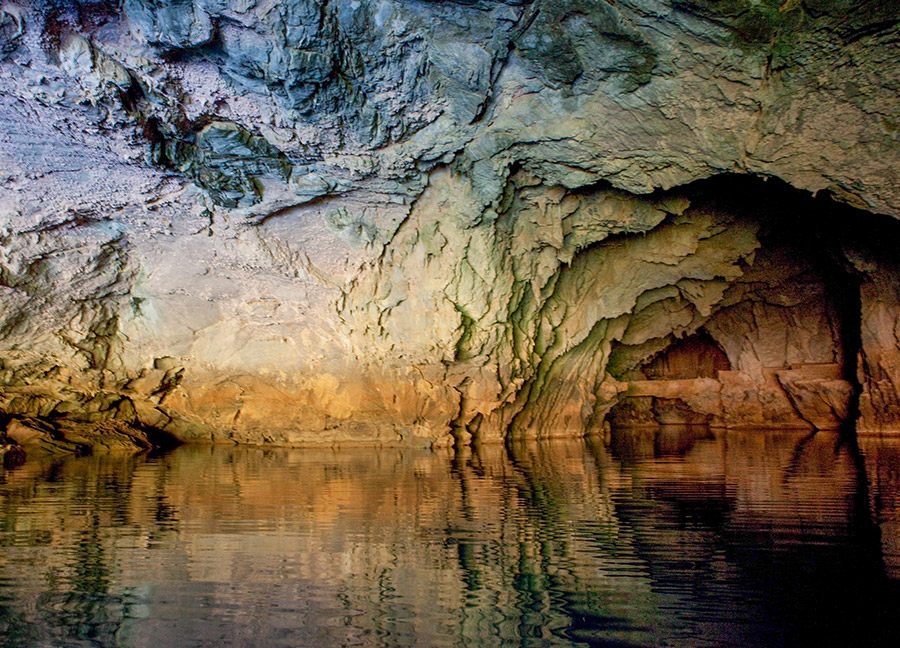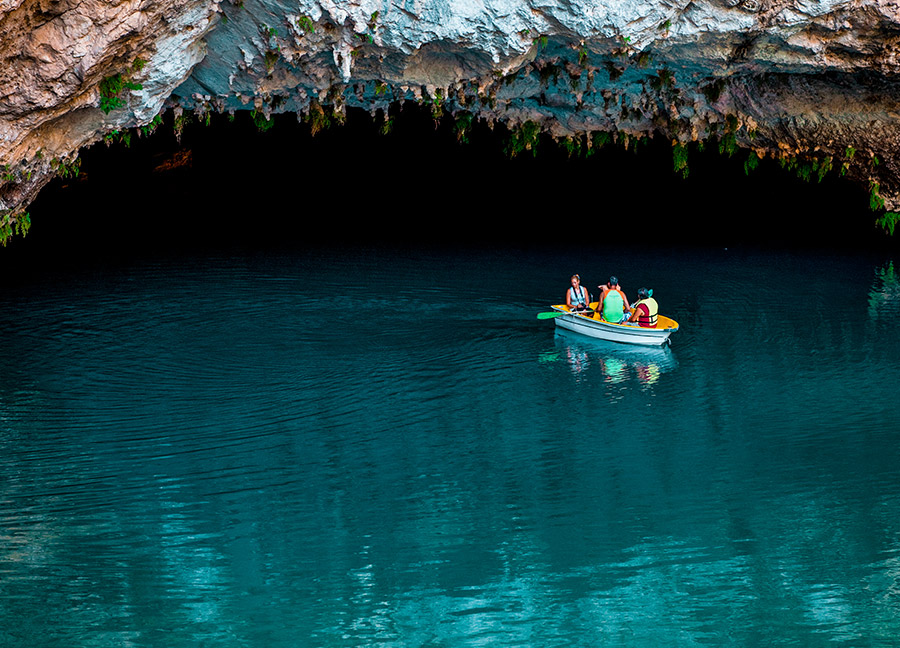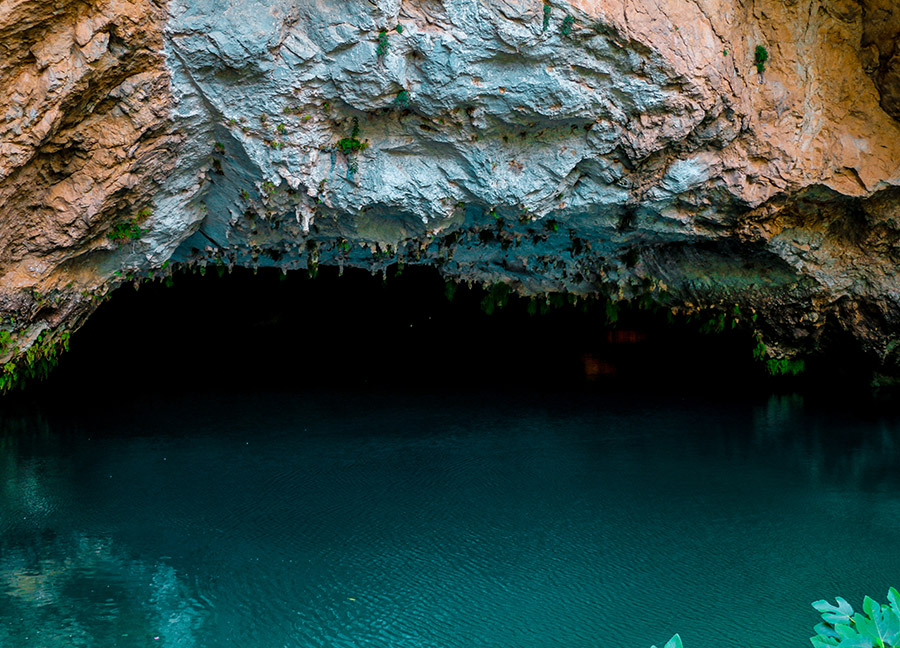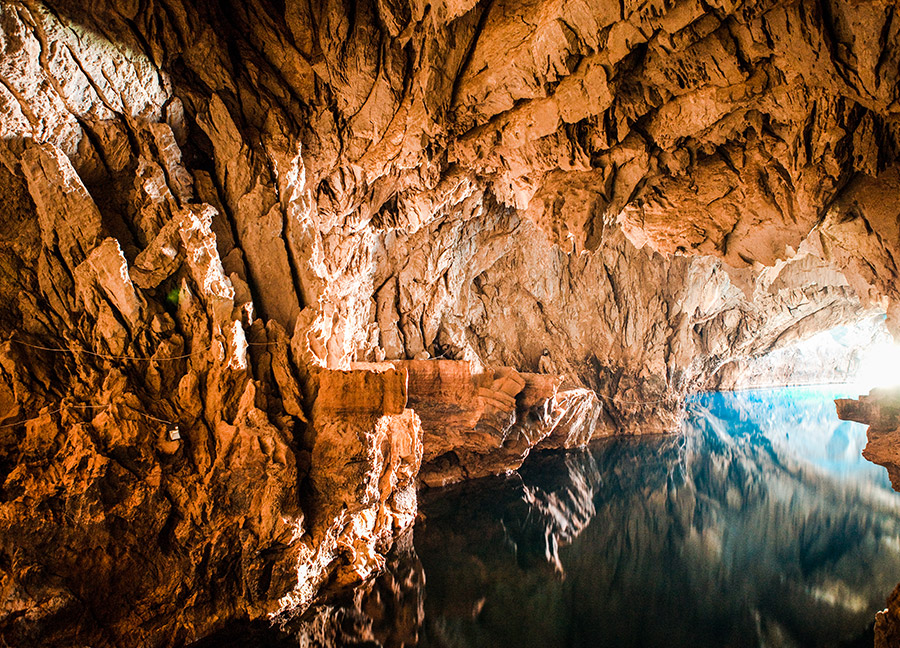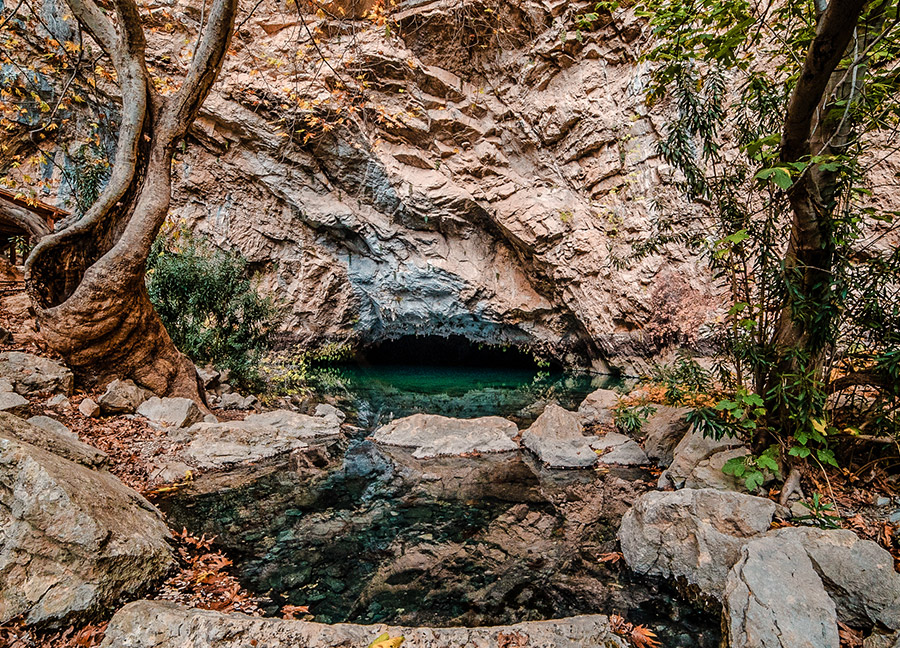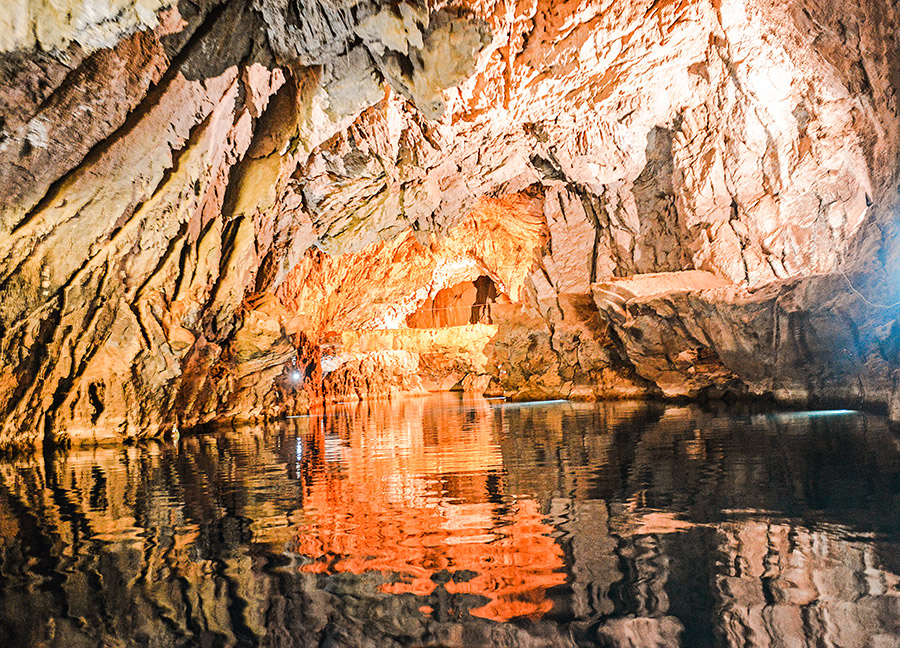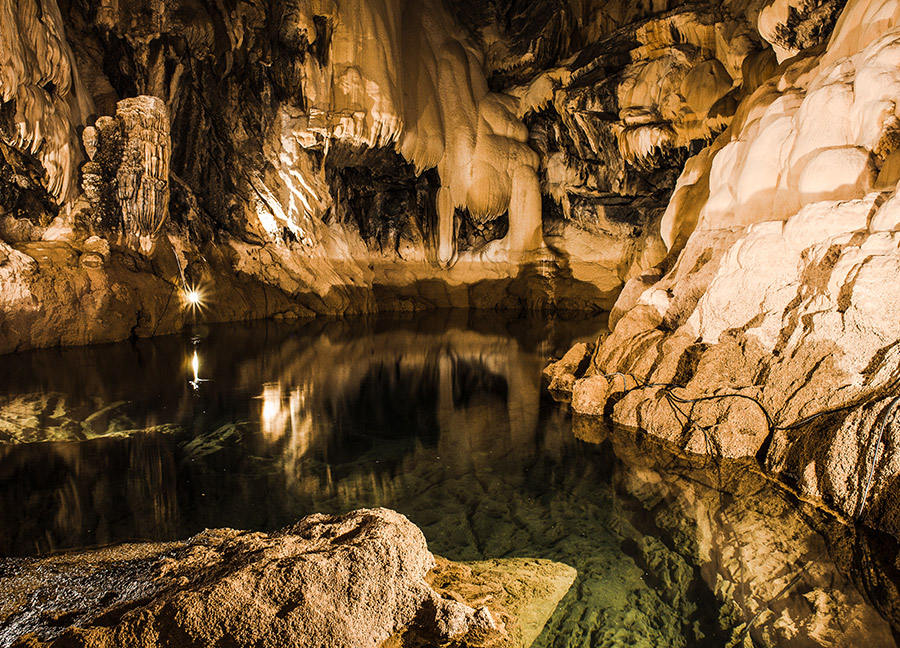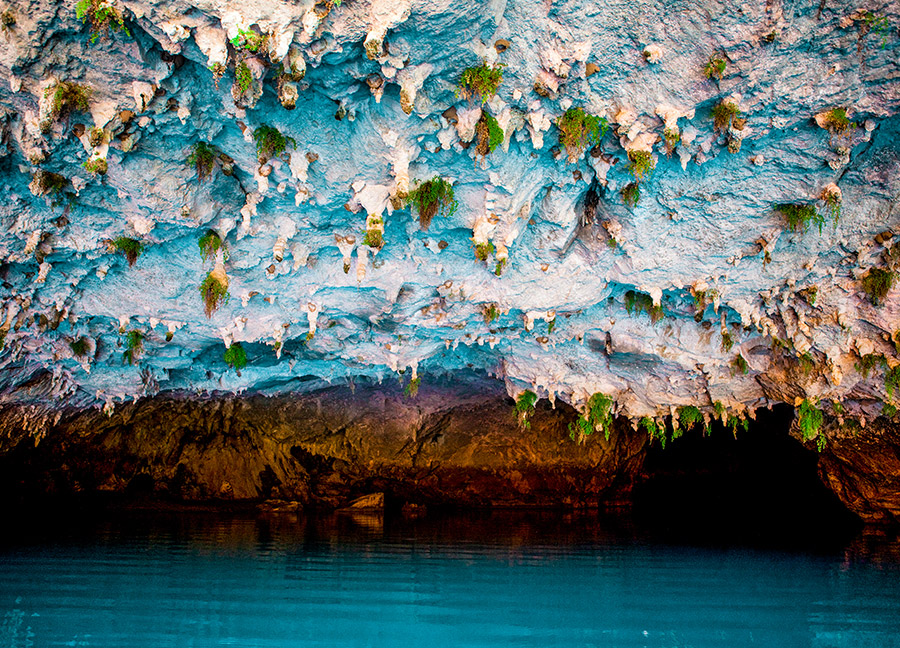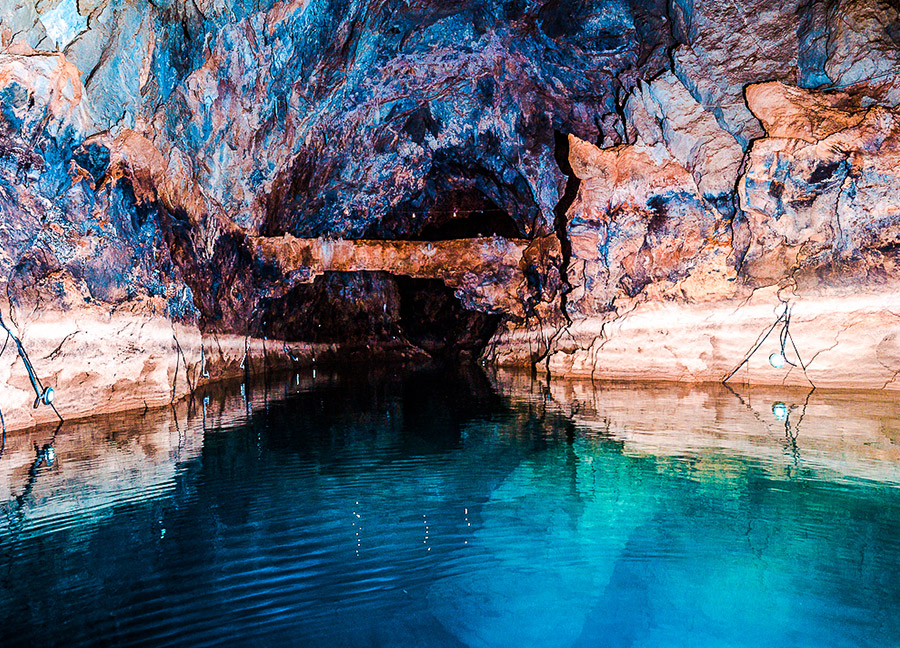Altınbeşik Cave National Park was declared a national park in 1994. It is 167 km from Antalya city center. It is approximately 5 km southeast of Ürünlü Village, which is 9.7 km away from the İbradı district.
Altınbeşik Cave is a horizontal and partially active cave that develops within the karstic structure that constitutes the resource value of the national park. It is considered Turkey's first and Europe's third-largest underwater lake cave. Altınbeşik Cave takes its name from Altınbeşik Hill at the top.
Altınbeşik Cave begins with a lake about 125 meters long from its mouth and sometimes reaches 15 meters in depth. In the middle part of the lake, there is a bridge made of natural rocks, and in the last part, there is a travertine formation with an extraordinary appearance, about forty-four meters high. The length of the cave, which empties its waters into the Manavgat Stream, reaches approximately 2500 meters with its inner branches. The cave draws attention with its dripstone formations and crevices. It offers an exciting visuality with its mysterious stalactites and stalagmites.
Altınbeşik Cave is suitable for entrances in the summer and autumn seasons. It is closed to visitors in winter and spring due to natural reasons, as it fills with water.
In the Altınbeşik Cave National Park, which has İbradı in the north, Ormana in the northwest, Ürünlü in the southwest and Menteşbey in the southeast, maquis vegetation unique to the Mediterranean dominates. In the park, which offers excellent richness in plant species, species such as cedar, juniper, red pine, white pine, plane tree and kermes oak can be found. The national park, which hosts many flower species, also has a wide range in terms of wildlife diversity. Mammal species such as wild boars, foxes, rabbits, wild goats and bats, and birds such as turtledove, henna partridge and thrush live in the national park.
You can spend peaceful and pleasant hours alone with nature in Altınbeşik Cave National Park. Nature walks and plant tours are made on the paths that offer unique views.


